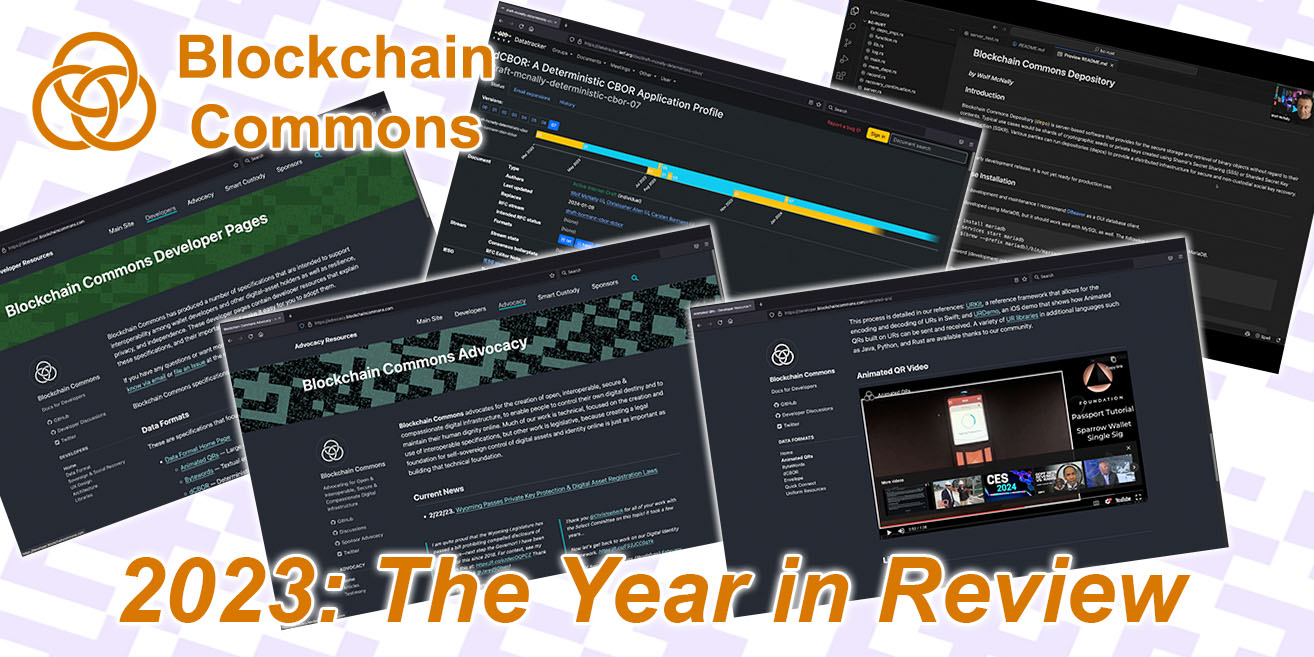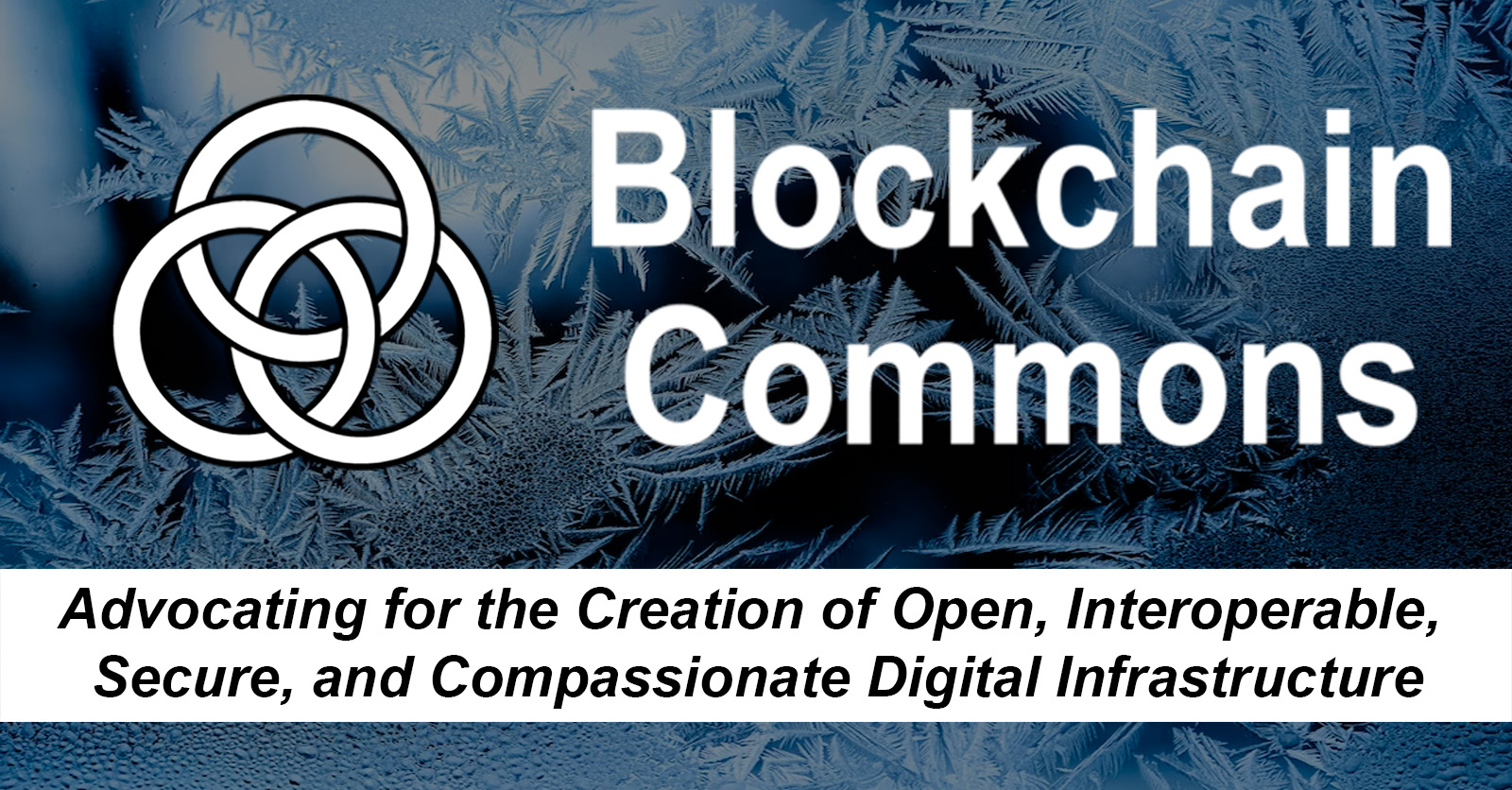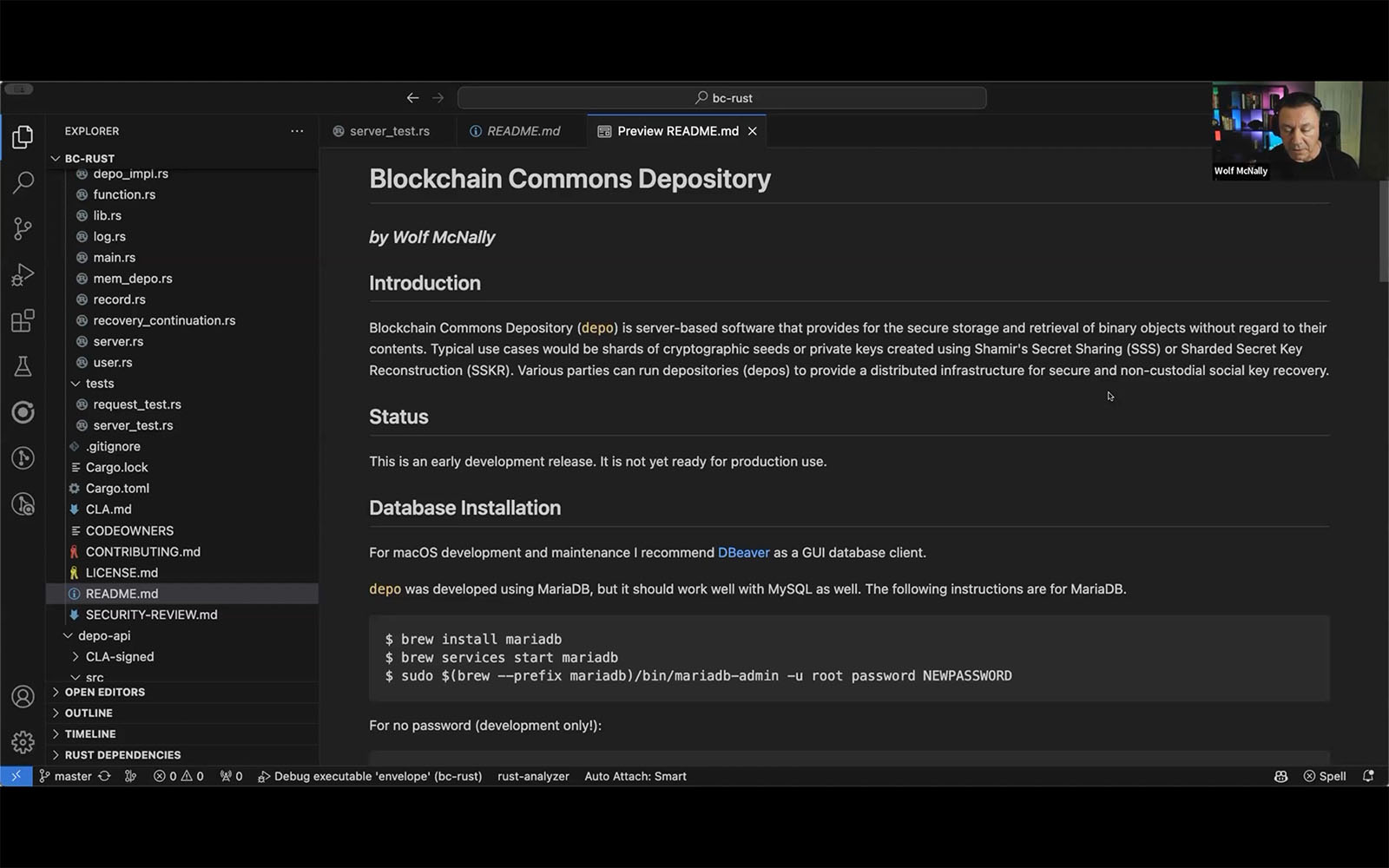Blockchain Commons 2023 Overview

Welcome to Blockchain Commons’ yearly report on our status and projects.
What is Blockchain Commons?
We’ve revisited Our Vision in past annual reports for Blockchain Commons, but this year we have a great overview of Blockchain Commons that we want to share. It was penned by Simon Ratner, one of our long-time patrons at Proxy, and now Head of Engineering at ŌURA. He said:
“Blockchain Commons isn’t a traditional industry association that only organizes, where all the work is contributed by the member companies. They’re producing their own architectures and reference libraries and sample applications. So in a way they are co-developing their standards, remaining independent while working among industry companies.”
“They provide specifications that actually exist and have been tested and vetted. This is especially important for a startup, since we’re benefiting the most from having standardized and interoperable work, as well as from having access to work of an additional engineering team.”
We’re appreciative of Simon for his recommendation, but also for his clear statement of what Blockchain Commons is and what we do. Blockchain Commons develops specifications that create interoperability. Doing so does indeed give smaller companies a leg up. While working with those companies, we’re also offering our own expertise. We’re doing so to benefit users and companies alike by creating a shared infrastructure that embeds our Gordian Principles of independence, privacy, resilience, and openness.
The whole recommendation can be found at LinkedIn. Thanks, Simon!
Our Standardizations
Blockchain Commons has been working on specifications for years. Our Animated QRs, which are built on URs, were our first specification to receive strong uptake in the digital-asset wallet community. We released a video this year to memorialize that. Meanwhile, the Gordian Envelope data format has been one of our major initiates over the last year and a half or so.
But specifications are just the first step. We ultimately need to work with standards bodies to ensure that our specifications are reliable and accessible in the long-term. In 2023, our specifications reached a sufficient level of maturity that we were able to begin that work.
Much of out new push for standardization focused on dCBOR, or deterministic CBOR. This is a variant of the CBOR data format that allows for consistent representation of data, something that is vital for a variety of use cases including our own Envelope. We’ve just published v07 of the spec, with CBOR expert Carsten Bormann now on board as a co-author, so we’re quite hopeful this will become an actual standard soon.
We’ve also been working on an Envelope standard for the IETF. We hope that there is interest in the format, but ultimately we’ll be happy if we can get the larger community focused on hash-based elision as a privacy measure, whether that’s with Envelope or not.
Our Envelope standardization work also expanded to IANA, who registers CBOR tags. Envelope is now registered with tag #200, allowing its widespread recognition whether it becomes an IETF standard or not. Other tags, which are used for URs, are also officially registered in the #40000+ range.
Overall, it was a great year for this new step forward in our specification work. It gives us strong faith that as we finalize the development of specifications with our community, we can move them into standards for use by the larger ecosystem.
Our Community
Work with the IETF helped Blockchain Commons to dramatically expand its community in 2023 through our meetings with that standards body. However, the Gordian Development community of wallet designers, chip manufacturers, and others continues to be our core constituency. As Simon wrote, part of Blockchain Commons’ mission is to act as an industry group that turns the needs of our patrons and partners into reality. That work is done with the Gordian community.
Blockchain Commons held a full dozen meetings with community members in 2023, including eight regular Gordian Developer meetings, one meeting focused on signing with Bitcoin keys, two Silicon Salons, and one FROST Round Table. We’re very appreciative of everyone who took the time to join us, and we’ve taken some real pointers from the community this year, resulting in the publication of our Gordian output descriptor v3 and a new system for detailing the status of our specifications.
We expect community members to benefit from our meetings too. Most recently, we heard of a tape-out, where the design of a circuit is sent to a manufacturing facility, following the work at our Silicon Salons where we brought together hardware-wallet manufacturers with semiconductor manufacturers interested in supporting them.
Our Depository
Standards such as Envelope and dCBOR focus on openness, but Blockchain Commons’ attention to resilience is at least as important. Openness ensures that a user will be able to control their digital assets through the interoperable tools of a variety of developers, while resilience helps them to be safe while doing so.
Since late 2022, our major resilience project has been Collaborative Seed Recovery (CSR). It attacks one of the biggest problems with independent control of your digital assets: it’s too easy to lose your keys (and the seeds they’re constructed from). Shamir’s Secret Sharing, which is part of our security-reviewed SSKR library, offers one solution: you shard a secret and then only need to recover some of those shares to reconstruct your seed. But, the shares can be subject to loss just like the seed itself!
Enter CSR. It envisions a variety of automated ways to recover shares from remote servers using diverse authentication systems to maximize security. Throughout 2023, Blockchain Commons advanced Envelope as a methodology for storing not just seeds, but the metadata critical for fully restoring both a seed and its assets. Toward the end of the year we also released our first version of Gordian Depository, a CSR server that can remotely store those Envelopes (or other data).
The next step is for Blockchain Commons to publicly deploy its Depository, which we hope will be the first of a network of share servers, provided by a variety of organizations. We hope these organizations will include not just traditional Bitcoin wallet companies, but also organizations such as modern-art museums, who have a mission to not only display but also preserve artwork — and for NFTs that means protecting Ethereum and Tezos keys. A varied and diverse ecosystem like this will give users real choices for whom they want to store their seed shares with.
We hope to see this ecosystem development over the course of 2024, but the strong foundation is now there.
FROST is Coming
Though we mainly focus on the big picture in our annual report, we wanted to mention our increasing focus on FROST, a quorum signature system that uses Schnorr. We’ve been watching Schnorr signatures for a long time and think they’re both important and powerful because of abilities such as threshold, blind, and adapter signatures, as Christopher wrote in “A Layperson’s Intro to Schnorr”.
FROST became a lot more accessible in 2023 thanks to the Zcash Foundation’s release of ZF FROST. We hosted a first round table to give FROST implementers the chance to talk with each other about their work and expect to continue supporting this exciting new technology in the year ahead.
Our Websites

Of course, no specification, standard, or other work is worthwhile unless people can access it. As a result, Blockchain Commons put real work in 2023 into expanding our presence on the web.
Most importantly, we launched a new Developer Website that collects together all of our tutorials, test vectors, and other info for developers, demonstrating how to implement URs, SSKR, and the rest. (Links throughout this yearly report connect back to developer pages.)
We also created a new Advocacy Website, which focuses primarily on our support for (or criticism of) upcoming digital-asset laws. This remains an important topic: most recently, we talked about the dangers of EIDAS in Europe and looked back at the tragedies created by overidentification in the past.
We’ve also updated our Main Website and our SmartCustody Website to fit the same format as our new sites and link them all into a cohesive whole.
Related, Christopher updated his own Life with Alacrity blog pages, which offer many of his thoughts on collaboration and identity going back two decades. His new Musings of a Trust Architect articles appear there as well (but also on the Blockchain Commons blog).
We of course continue to do much of our work in GitHub, which is the internet home of our library and apps — as well as our actual specifications, in the form of our Research Papers repo. We reorganized things there as well, with a new “Research Status” system that reveals the adoption level and thus stability of each of our specifications.
Looking Forward
The Blockchain Commons mission statement highlights four objectives: creating a Commons, Architecture, and Demand and establishing relationships with Peers. We expect to continue to work on all of these objectives in 2024.
A lot of our work is part of creating a Commons. We’re thrilled to constantly add reference libraries and apps to the Commons, including Gordian Seed Tool, which should see a 1.6 release early in 2024. We think that our new advocacy toward Open Development will be an important next step in creating this Commons; we expect to discuss that more widely in the coming year.
We talked about our Architecture underpinnings much more in 2023 with Christopher’s Musings of a Trust Architect articles. We expect more of that in 2024, with the topics of edge identifiers and cliques currently in our queue for both discussion and experimentation. However, we’re also working on the opposite side of the spectrum, which involves making our architectural ideas into standardized reality. We’ll be continuing to work with IETF, with plans to release a Problem Statement on the needs for hash-based elision for data storage, and we’re also planning to move some of our specifications to BIPs, beginning with our animated QR work.
We also expect to further investigate the usage of NFCs in a secure digital-asset architecture. This will include an examination of commodity NFC smartcards with the intent of creating references and best practices for securing a variety of data, from seeds and share to backed-up keys for developers. This is of a piece with our work on Depo servers: the ultimate goal is to give users a choice as to how their store their digital-asset seeds & keys.
Some of architectural work ties directly to our work on Demands. We want to increase the call for privacy-first solutions to better support human rights, protect against coercion, and generally allow people to decide what information they release to the world. Demonstrating the need for hash-based elision is one way to do so.
Finally, we will continue to support our Peers, especially through meetings. Besides our regular Gordian meetings, we also hope to organize special-purpose events for emerging hot topics. This may include more FROST round tables, additional Silicon Salons, or others as needs arise within the digital-asset space.
However, we need your help to ensure this future. The financial climate for web3 work became very poor in 2023 due to investments drying up for the whole sector. This has resulted in some of our long-term patrons being forced to step back or even merge their businesses, which has impacted their patronage. If your company benefits from our work, please become a sponsor to ensure it continues. We are particularly looking for companies able to become sponsors at the $1,000 a month or better level. Please contact Christopher Allen to learn more of the benefits of doing so.


